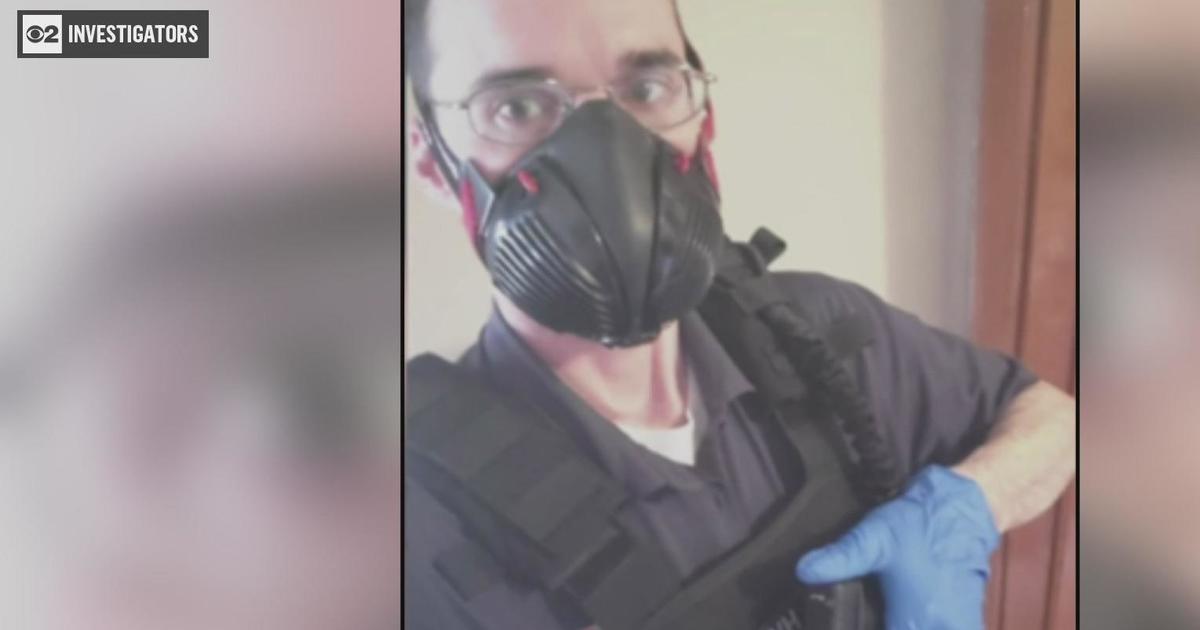High Levels Of Toxic Lead Found Near Elementary School
CHICAGO (WBBM) -- Residents in Chicago's Pilsen neighborhood complained for years about metallic-tasting smoke rolling down their narrow streets but had little evidence it was harmful.
Now they have proof. New monitoring data obtained by the Tribune reveal that high levels of toxic lead frequently lingered in the air last year outside an elementary school in the predominantly Latino enclave that is attended by nearly 500 children.
LISTEN: Newsradio 780's Bob Roberts reports
Podcast
Average lead levels at Perez Elementary School were at or above federal limits during three three-month periods in 2010, the data show. Lead pollution exceeded health standards during a fifth of the days monitored and, on one day in December, spiked more than 10 times higher — findings that alarm even veteran investigators.
None of the 14 other lead monitors placed near factories, steel mills and highways in northeastern Illinois and northwestern Indiana recorded as many high readings as the one that state officials put on the roof of Perez a year ago, responding to Tribune reporting about air pollution in Pilsen. The only other part of Illinois where a chronic lead problem was detected is a neighborhood surrounding a steel mill in Granite City, across the Mississippi River from St. Louis.
With a full year of results in hand, the high airborne lead levels found at Perez are prompting a joint investigation by the U.S. and Illinois Environmental Protection agencies. Officials put another monitor on the roof of nearby Juarez Community Academy two weeks ago in an attempt to pinpoint the culprits.
While officials aren't sure yet where the lead is coming from, both Pilsen schools are within a few blocks of two of the biggest industrial sources of the toxic metal in the Chicago area: the H. Kramer and Co. smelter and the Fisk coal-fired power plant. Perez is north of the two polluters; Juarez is west.
"We're trying to move quickly because children are involved," said Laurel Kroack, chief of the Illinois EPA's air bureau. "But we need better data to figure out the story before moving forward."
More stringent limits on airborne lead emissions are part of a decades-long campaign to protect kids from lead poisoning. A growing number of studies show that even tiny amounts of the metal ingested or inhaled can damage the brains of young children and trigger learning disabilities, aggression and criminal behavior later in life. Most scientists say there is no safe level of exposure.
Efforts to prevent lead poisoning are focused largely on safe removal of old lead-based paint, though limits on industrial polluters and the elimination of leaded gasoline already have led to declining levels in children.
Pilsen is drawing attention from federal and state officials in response to "environmental justice" complaints that the minority, low-income neighborhood is disproportionately affected by air pollution.
"Lead pollution is another big problem for us," said Jerry Mead-Lucero, a community activist who lives in Pilsen. "The only way we're going to get answers is to keep the pressure on the EPA to find out where it's coming from and go after them."
As part of their investigation, EPA officials gathered annual reports from H. Kramer, Fisk and the four other polluters that reported lead emissions in a 20-square-mile area bordered by the Eisenhower and Dan Ryan expressways, Pershing Road and Cicero Avenue.
Three of them each emitted 4 pounds or less of lead in 2009, the last year for which figures are available, according to records obtained by the Tribune under the Freedom of Information Act. By contrast, H. Kramer and Fisk released 242 and 149 pounds into the air, respectively.
Another polluter, the Crawford coal-fired power plant at Pulaski Road and the Stevenson Expressway, emitted 210 pounds of lead. It is nearly four miles from the monitors at Perez, 1200 block of W. 19th St., and Juarez, 1400 block of W. Cermak Road.
EPA scientists are collecting more frequent samples from the monitors, tracking weather conditions during days when spikes of pollution are measured and chemically matching lead particles sucked into the testing devices with emissions from nearby polluters.
Officials have not widely shared the monitoring results in Pilsen, where brick three-flats that survived the Great Chicago Fire of 1871 are crammed cheek by jowl next to factories. Speaking in Spanish, a woman who lives less than a block from Perez said she is concerned about how the frequent spikes of lead pollution could affect children.
"We have to make sure they are breathing clean air, right?" said Reyna Rebollar, whose 9-year-old grandson is a third-grader at the school. "This is bad. It's blood poison."
Spokesmen for H. Kramer and Fisk denied their facilities are responsible for the high levels of pollution.
The smelter, once the largest industrial source of airborne lead in Cook County and the collar counties, has significantly reduced its emissions in response to pressure from community leaders and environmental regulators.



